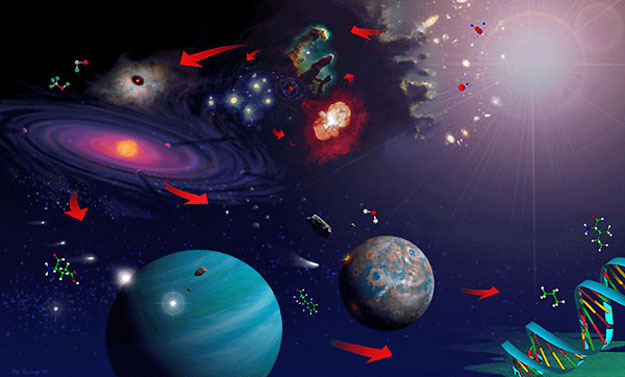ASTR3800: Astrobiology
ASTR3800: Astrobiology#
Lecture notes for ASTR 3800 Astrobiology at Valdosta State University. This course is designed using material from Fundamental Planetary Science, Earth: Evolution of a Habitable World and Planets and Life: The Emerging Science of Astrobiology, where it will include summaries of the course material and code implementation/exercises. The course is divided into three sections (Basic Planetary Science; Origins of Life; and Life on Habitable Worlds).
The following chapters are used from Fundamental Planetary Science by Lissauer & de Pater:
1 Introduction
2 Dynamics
3 Physics and Astrophysics
4 Solar Heating and Energy Transport
5 Planetary Atmospheres
16 Planets and Life
16.6 Planetary Requirements for Life
16.8 How Life Affects Planets
16.9 Origin of Life
16.10 Darwinian Evolution
The following chapters are used from Earth: Evolution of a Habitable World by Lunine:
4 Fusion, fission, sunlight and element formation
11 The Hadean Earth
14 The first greenhouse crisis: the faint young Sun
17 The oxygen revolution
19 Climate Change across the Phanerozoic
Planets and Life: The Emerging Science of Astrobiology has many authors, where the following contributions are used:
5 Does ‘life’ have a definition? (Cleland & Chyba)
6 Origin of life: the crucial issues (Shapiro)
10 Evolution: a defining feature of life (Baross)
11 Evolution of metabolism and early microbial communities (Leigh, Stahl, & Staley)
12 The earliest records of life on Earth (Buick)
13 The origin and diversification of eukaryotes (Sogin, Patterson, & McArthur)
14 Limits of carbon life on Earth and elsewhere (Baross, Huber, & Schrenk)
16 The evolution and diversification of life (Awramik & McNamara)
17 Mass extinctions (Ward)
18 Mars (Jakosky, Westall, & Brack)
19 Europa (Chyba & Phillips)
20 Titan (Lunine and Rizk)
This work is licensed under a Creative Commons Attribution 4.0 International License.

